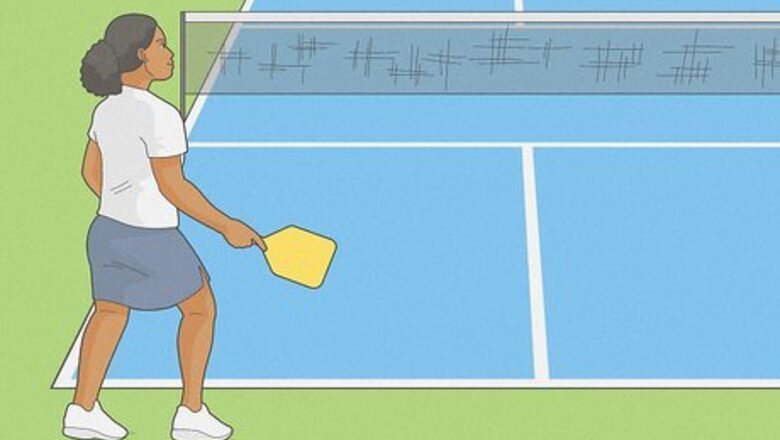
views
- Stand behind the baseline on your side of the court and keep at least one foot on the ground throughout your serve.
- Try a volley serve to hit the ball before it bounces on the ground, or do a drop serve to hit it after it bounces. Use a forehand or backhand swing for either type of serve.
- Hit the ball diagonally cross-court to the opposite side of the net so it lands in bounds past the non-volley zone by the net.
Basic Rules for Pickleball Serves
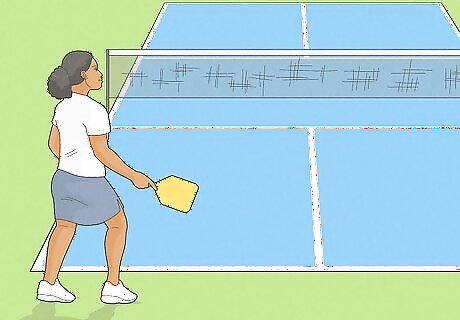
Stand behind the baseline on your end of the court. The baseline is at the end of the pickleball court, and you cannot cross during the entirety of your serve. During the first serve of the game, stand behind the baseline on the right side of the court, also known as the “even” side. Every serve starts behind the baseline when you’re playing pickleball, but the first serve for each team always begins on the right side of the court. You can use any method to determine which team serves the ball first, such as a coin toss.

Keep at least 1 foot on the ground during your serve. Whenever you’re serving the ball, you may not step on the baseline or cross over it into the court. At least one foot has to stay on the ground throughout the entirety of your serve, so jumping before you hit the ball is not allowed. Additionally, you may not cross the centerline or sideline, or else it will result in a fault and loss of service.

Hit the ball with a forehand or backhand motion. Both the volley serve and the drop serve are both legal in pickleball, and we’ll cover them more in-depth in the next section. You may hit either serve with a forehand shot (where your palm faces the direction you’re swinging) or a backhand shot (where your palm faces away from the direction you’re swinging). While a forehand serve is more common, the way you hit the ball depends on your personal preference. In an official game of pickleball, you must serve the pickleball within 10 seconds of the referee calling out the score.
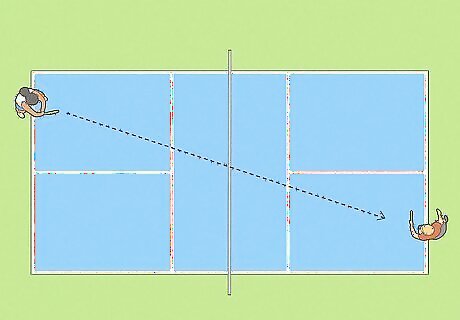
Serve the ball diagonally to the opposite end of the court. When you’re serving from the right side of the pickleball court, the ball must cross over the net and land on the opposite side. The ball must go past the “non-volley zone,” which is the rectangular area within 7 ft (2.1 m) of the net, and land inside of the court for the serve to be legal. The non-volley zone is commonly called the “kitchen.” If the ball lands outside of the court or inside the non-volley zone, then the serve is considered a fault. You’re only allowed 1 attempt at serving the ball. If the ball goes out of bounds or you break a different service rule, then your attempt is considered a fault. In a doubles game of pickleball, the receiver on the side of the court diagonal to you is the only one who can return the serve.
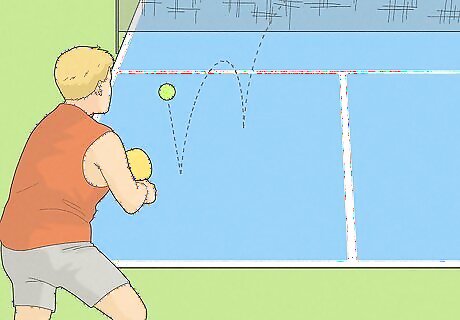
Follow the 2-bounce rule at the start of each rally. After you serve the ball, the receiving team must allow the ball to bounce on the ground once before they’re allowed to hit it. Once they return the ball, your team also must let the ball hit the ground before you’re able to hit it back. That way, the rally lasts longer and no team is given an advantage. After the 2-bounce rule, players may hit the ball before or after it bounces on the ground.
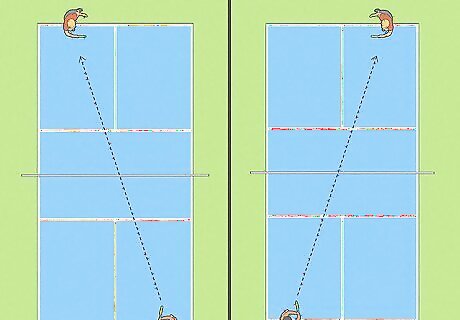
Alternate between the left and right sides of the court between serves. If your team scores a point after you serve the ball, you continue to serve the ball. Whenever you have an odd number of points, serve the ball from the left side of the court, also known as the “odd” side. When you have an even number of points, serve the ball from the right side. If a serve hits a player on the opposite side of the court before it hits the ground, then it’s considered a fault on the receiving team. The serving team gains a point and continues the next serve.
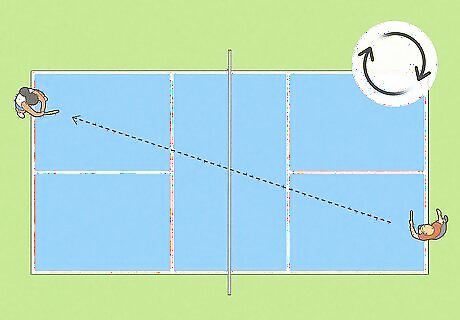
Switch servers when your team commits a fault. A fault occurs whenever a team breaks a rule and stops play. When the receiving team commits a fault, the serving team earns a point. If you’re on the serving team and commit a fault, then the other player on your team gets a chance to serve. Once both people on the serving team commit faults, the service switches to the other team starting on the even side of the court. Faults occur when: A player violates a service rule A serve lands out of bounds or in the non-volley zone The ball hits the net without going over The ball bounces twice on the same side of the court A player hits the ball while they’re in the non-volley zone A player volleys the ball in the air before the 2-bounce rule A player touches the net At the start of a doubles pickleball game, only one player on the serving team gets a chance to serve before faulting. After they commit a fault, the service switches to the receiving team.
Legal Pickleball Serves
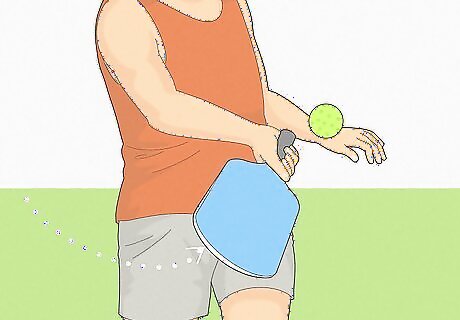
Volley serve A volley serve is when you hit the ball without bouncing it off the ground first. During the serve, toss the ball straight up or drop it straight down, and hit the ball with your paddle before it hits the ground. During a volley serve, you must hit the ball while it’s below your waist using an underhand swing. The highest point of the paddle’s head cannot go any higher than where your wrist joint bends when you strike the ball. You’re allowed to toss the ball straight up in the air to give yourself more time and space to hit it. Try to avoid hitting any bad tosses or drops. After a referee calls the score, you have 10 seconds to hit the ball, so just pick it up and quickly try again.

Drop serve A drop serve is when you drop the ball from any height and let it bounce off the ground before hitting it. After the ball bounces off the ground, you may strike it with your paddle using any forehand or backhand motion. It’s okay if the paddle head goes higher than your wrist joint or if you strike the ball above your waist during a drop serve. You may not throw or toss the ball during a drop serve. Try to hit the ball at the height of its bounce so it’s at a higher point of contact and gets more power from your swing.
Strategies for Serving
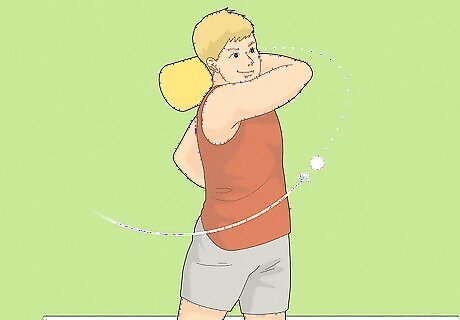
Follow through with your shot to get the most power. After you hit your serve, keep swinging your arm forward toward your target to carry the ball further. The ball will get more height and go deeper into the court, making it more difficult for the receiving team to return it to your side. Giving the ball more height during your serve also makes it bounce higher, which can be difficult for a receiver to read or swing at.

Get into a ready position right after serving. Right after you serve the ball, stay near the baseline to prepare for the return volley. Keep your elbows and paddle out in front of your body and position your feet shoulder-width apart. Stay on your toes so you’re ready to quickly move toward the ball and hit it back to the other side. Stay behind the baseline after you serve and only move forward once a player hits the third shot. That way, you’re in a better position when the ball bounces off the ground.

Serve the ball deep to keep the receiver further back. When you’re hitting your serve, try to hit the ball firmly with the center of the paddle so it lands closer to the baseline. The receiver will have to stand further back to return the ball, leaving the front part of their court open and vulnerable for your next hit. If you’re having trouble hitting the ball deeper, try taking a larger backswing and make sure you keep your head down while you hit the ball.
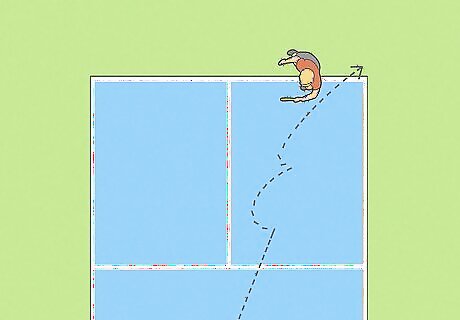
Aim the ball toward the receiving player’s backhand. Try to hit your serve so it’s about 8 inches (20 cm) inside from the centerline so the ball is toward the receiver’s backhand. Backhand shots are a little tougher for players to return, so it may result in an easy point for your team. In a doubles game, aiming toward the centerline may also confuse the receiving team and cause the wrong player to hit the ball first.
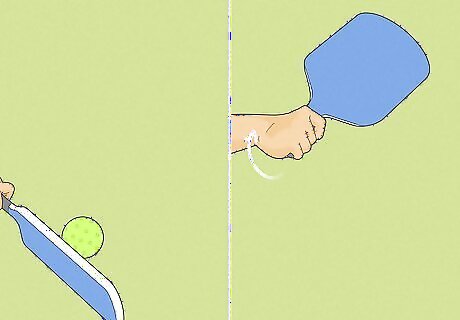
Turn your paddle when it contacts the ball to add spin. As you hit the ball on your serve, turn your wrist toward the inside of your body so the paddle is vertical instead of horizontal. The added topspin on the ball will propel the ball further and make it bounce more erratically so it’s more difficult for the receiver to return your serve.










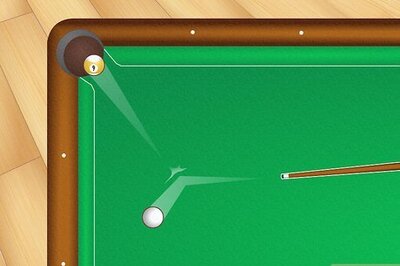


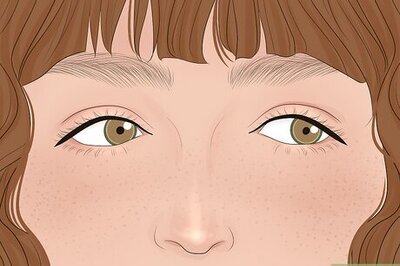
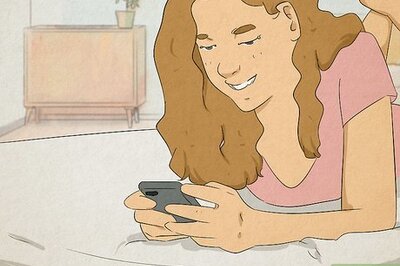
Comments
0 comment